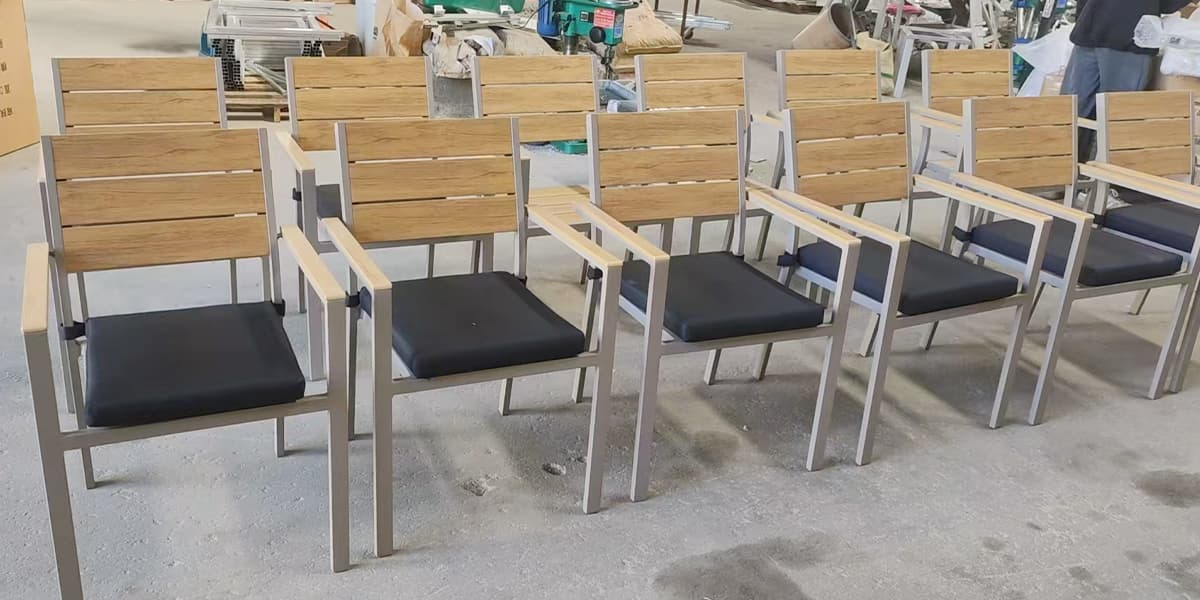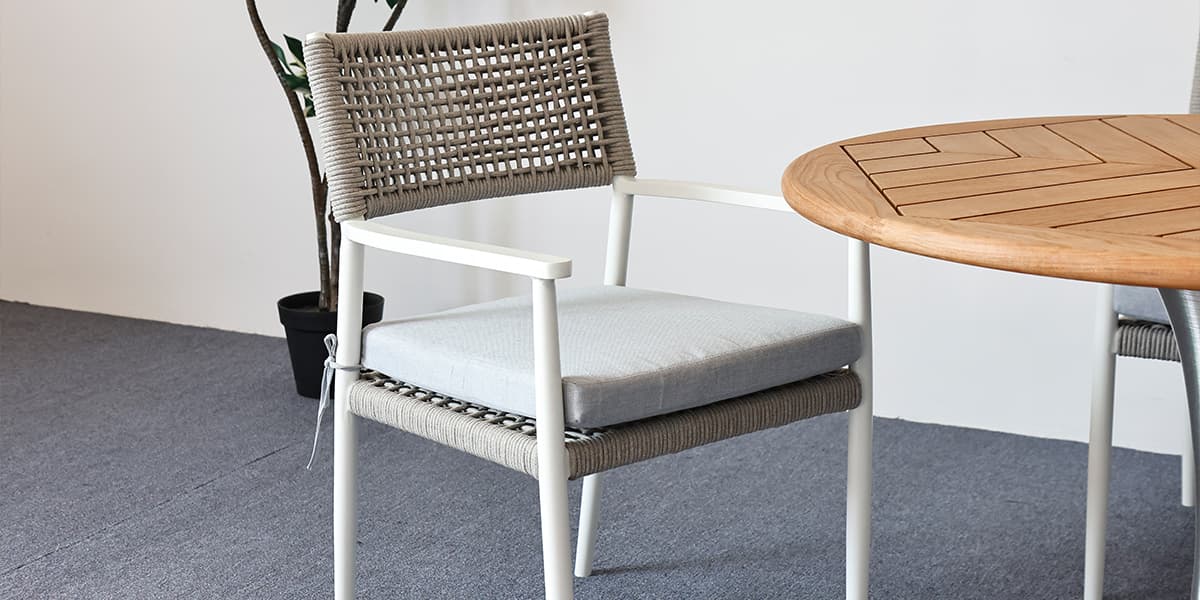Outdoor Chair Manufacturer Guide: How to Choose Quality & Durable Designs
Imagine a perfect outdoor oasis—a space where comfort meets the elements, where relaxation is the only agenda. At the heart of this vision often sits the humble outdoor chair, an unsung hero that blends functionality with aesthetic appeal. For an outdoor chair manufacturer, this isn’t just about bending metal or molding plastic; it’s about crafting experiences, building lasting products that withstand sun, rain, and the test of time.
At Kingmake factory, we bring this vision to life through comprehensive OEM/ODM services. We specialize in high-volume production of garden chairs and restaurant seating. Our manufacturing capabilities include aluminum frames, teak wood constructions, and aluminum-teak with handwoven wicker designs. We customize every outdoor chair to meet specific project requirements. The journey from raw material to a beloved patio fixture is fraught with design challenges, material science decisions, and market complexities. It requires a keen eye for detail, an unwavering commitment to quality, and a deep understanding of consumer needs. As an industry veteran, I’ve seen brands rise and fall based on their ability to navigate these waters. This guide is designed to arm you with the strategic insights needed to not just survive but thrive. We’ll delve into everything from the crucial role of material innovation to the art of sustainable manufacturing and the imperative of robust quality control. I hope to equip you with the knowledge to build chairs that don’t just fill a space, but truly enhance it, becoming cherished pieces in people’s lives for years to come. So, let’s explore what it takes to manufacture outdoor chairs that stand out in a crowded market.

Frequently Asked Questions
FAQ 1: What are the current trends shaping the outdoor chair market?
The current trends in the outdoor chair market are heavily influenced by the “outdoor room” concept, which focuses on comfort, versatility, and integrated technology. Consumers seek modular designs, sustainable materials, and smart features like built-in lighting or charging ports, reflecting a desire to extend indoor living spaces outdoors. There’s also a strong demand for durable, low-maintenance options that can withstand diverse climates while retaining aesthetic appeal. The blending of residential and commercial outdoor spaces further drives innovation in both style and function.
Real Results: A manufacturer incorporating modular designs and recycled plastics saw a 30% increase in sales to multi-family residential complexes and boutique hotels last year.
Takeaway: Embrace modularity and sustainability to capture diverse market segments and meet evolving consumer demands.
FAQ 2: How can manufacturers identify and target specific niche markets?
Manufacturers can identify and target specific niche markets by conducting granular market research, analyzing demographic data, and observing lifestyle trends. This involves segmenting the market based on factors like income level, geographic location, aesthetic preferences (e.g., minimalist, rustic, or contemporary), and intended use (e.g., poolside, balcony, or glamping). Engaging with social listening tools and participating in industry-specific forums can also reveal underserved segments. A manufacturer might focus on eco-conscious urban dwellers or large-scale commercial hospitality projects.
Real Results: A small firm that focuses solely on compact, collapsible chairs for RV owners and small balcony users achieved 90% market penetration within that niche in 3 years.
Takeaway: Dive deep into consumer needs and lifestyle to carve out a highly specialized, profitable niche.

FAQ 3: What role does market research play in product development for outdoor chairs?
Market research plays a foundational role in product development for outdoor chairs by providing crucial insights into consumer preferences, emerging trends, and competitive landscapes. It guides decisions on materials, design aesthetics, ergonomic features, and pricing strategies. Through surveys, focus groups, and competitor analysis, manufacturers can validate new product concepts, identify unmet needs, and mitigate risks before significant investment. This data-driven approach ensures that new chairs are not only innovative but also highly desirable and commercially viable for target audiences.
Real Results: After extensive research, one company shifted from traditional wood to marine-grade polymer, which resulted in a 25% increase in customer satisfaction ratings and a 15% boost in sales.
Takeaway: Utilize market research continuously to inform product innovation and ensure market fit for new designs.
FAQ 4: Which materials offer the best balance of durability and aesthetics for outdoor chairs?
Aluminum and marine-grade polymers (like HDPE) often offer the best balance of durability and aesthetics for outdoor chairs due to their weather resistance, low maintenance, and design versatility. Aluminum provides a sleek, modern look, is lightweight, and resistant to rust, which makes it ideal for various finishes. Marine-grade polymers, which are derived from recycled plastics, are exceptionally durable, color-fast, and require minimal upkeep, offering a solid, wood-like appearance without the traditional wood maintenance. Both materials allow diverse designs, from minimalist to more intricate forms, catering to a broad spectrum of aesthetic preferences.
Real Results: A resort chain replaced all its poolside seating with chairs made from recycled HDPE, reporting a 40% reduction in replacement costs over 5 years and zero rust issues.
Takeaway: Prioritize materials like aluminum and marine-grade polymers for optimal durability and design flexibility.

FAQ 5: How important is ergonomic design in outdoor furniture manufacturing?
Ergonomic design is critically important in outdoor furniture manufacturing as it directly impacts user comfort, safety, and overall satisfaction. A well-designed ergonomic chair reduces pressure points, supports natural posture, and enhances the relaxation experience, encouraging longer periods of use. Neglecting ergonomics can lead to discomfort, potential injury, and negative brand perception. Manufacturers must consider factors like seat height, depth, backrest angle, and armrest positioning to create chairs that are universally comfortable for a wide range of body types. It’s a blend of science and art.
Real Results: A brand that invested in ergonomic studies for its Adirondack chair line reported a 20% increase in positive customer reviews that mention comfort and repeat purchases.
Takeaway: Integrate ergonomic principles into every design phase to boost user satisfaction and brand loyalty.
Looking for reliable outdoor chair solutions? Contact Kingmake Outdoor for durable aluminum, teak and synthetic wicker chairs customized for your business needs.


